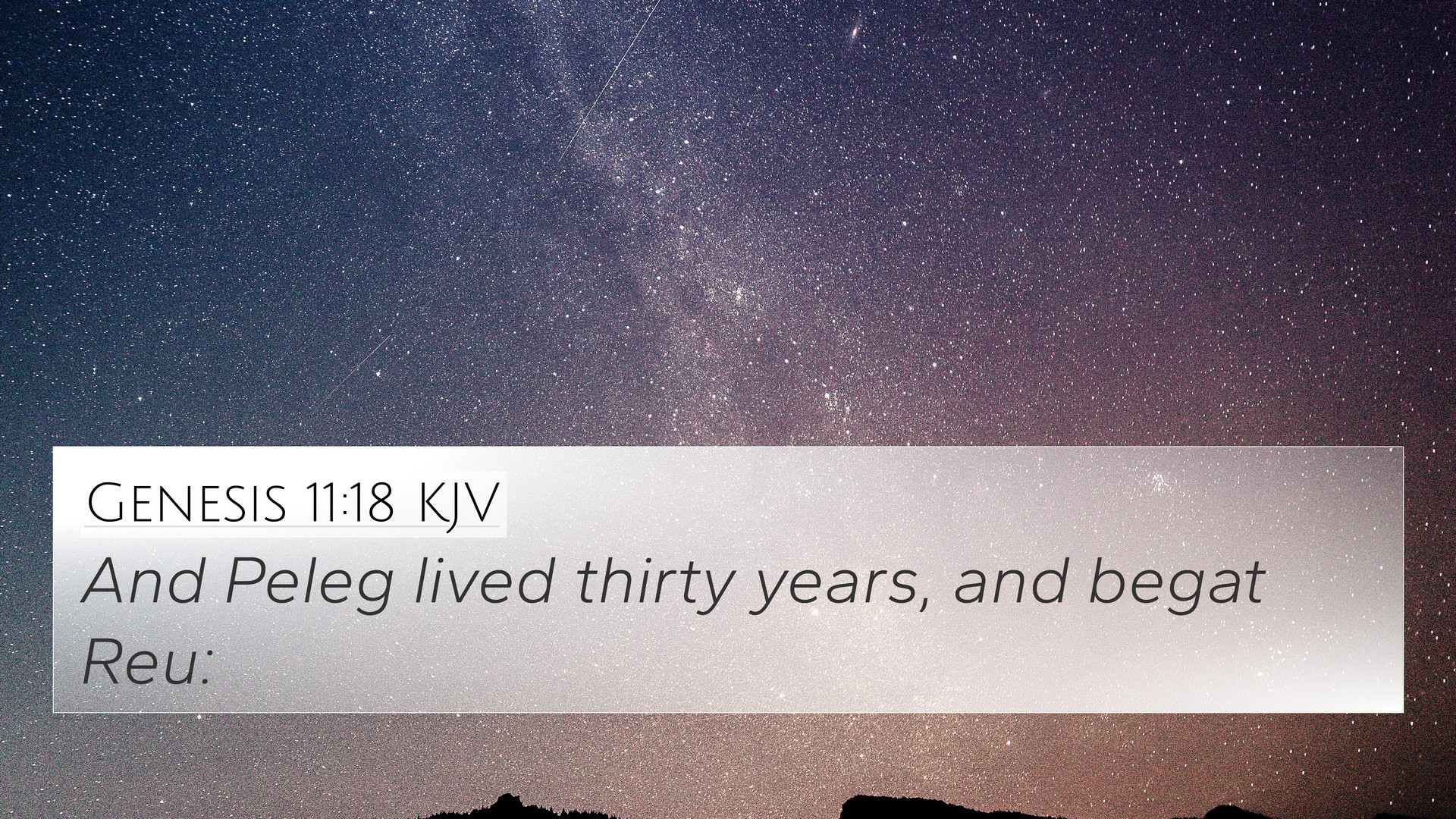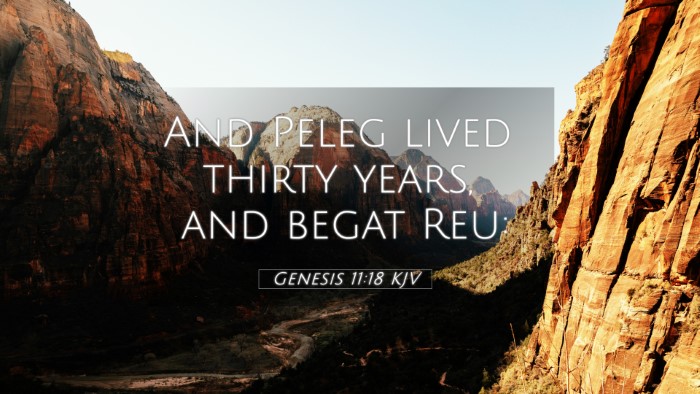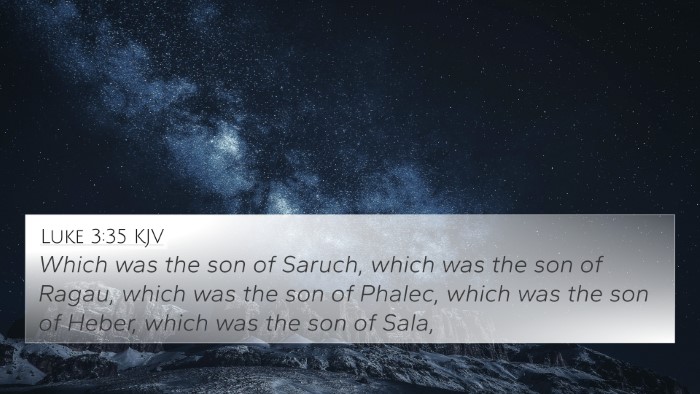Understanding Genesis 11:18
Genesis 11:18 presents a key moment in the genealogical narrative of the Book of Genesis, specifically detailing the lineage of Shem, one of Noah's sons. This verse sheds light on the descendants that are pivotal for understanding the heritage leading to Abraham and ultimately the formation of Israel.
Verse Summary
The verse reads: "And Peleg lived thirty years, and begat Reu." Here, we observe the continuation of the genealogical record, where Peleg's fatherhood of Reu is documented. This brief notation may seem straightforward, yet it encapsulates significant theological and historical implications.
Thematic Analysis
- Genealogy Significance: Genealogies in Scripture often associate individuals with God's plan. Matthew Henry notes that these records, although may appear tedious, serve to show God's faithfulness across generations.
- Historical Context: Albert Barnes highlights that the mention of Peleg is reflective of the division of the earth during his lifetime, which alludes to a significant event in human history and God's providential control over nations.
- Connection to Covenant: Adam Clarke mentions that through these genealogies, God’s covenant is preserved, ultimately pointing to the coming Messiah. The lineage of Abraham—through whom many nations are blessed—originates here.
Comparative Analysis with Other Scriptures
This verse connects with a number of other biblical passages, enriching the understanding of inter-Biblical dialogue. Notable references include:
- 1 Chronicles 1:19: Affirms the genealogy from Peleg to Reu.
- Luke 3:35-36: Includes Reu in the lineage of Jesus, connecting the New Testament to Old Testament prophecies.
- Genesis 10:25: Introduces the concept of division in the earth's nations during Peleg's time, confirming the narrative of Genesis 11.
- Hebrews 7:14: References the lineage of Judah, linking back to the covenant made with Abraham, but here, Reu's heritage is also part of that broader context.
- Genesis 12:1-3: The call of Abraham promises blessings for nations which can be traced back to the line of Peleg.
- Acts 17:26: Speaks of God creating nations from one blood, echoing the genealogical significance of Peleg.
- Romans 9:5: Asserts that Christ comes from the lineage of Abraham, linking back to these early genealogies.
Connections between Bible Verses
This verse also helps identify connections between the Old and New Testament. The lineage signifies the unfolding of God's redemptive plan, a theme prevalent in the Biblical narrative. Cross-referencing Bible texts allows for deeper theological insights:
Cross-reference Strategies
- Utilizing a Bible Concordance to find references related to Peleg and Reu.
- Employing a Bible Cross-reference Guide to explore connections with Genesis chapters related to the Tower of Babel.
- Implementing Cross-reference Bible Study methods to identify how different genealogies interlink.
The exploration of Genesis 11:18 through various lenses—including its genealogical significance, historical implications, and theological connections—provides rich insights into the biblical narrative.
Conclusion
In summary, Genesis 11:18 serves as a vital piece in the puzzle of the Biblical genealogy that traces the lineage from Noah to Abraham. It illustrates not merely the passage of time but encapsulates the continuity of God's promise through generations, ultimately culminating in the arrival of Christ. Through the tools for Bible cross-referencing and thematic analysis, the connections between Bible verses emerge, reinforcing the unity of Scripture and the overarching divine narrative.



